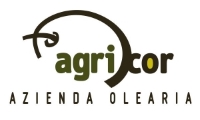Fatty acids: these are the ingredients of almost all complex lipids and of vegetable and animal fats. They can be “saturated” (hardly digestible, difficult to eliminate and tend to accumulate on the arterial walls, thus promoting cardiovascular pathologies) and “unsaturated” (these are easily digestible and in some cases have a preventive action against the formation of neoplasia and the development of arterial problems).
Filtration: a process with which substances present in the oil are removed after extraction. The most commonly used filters are the most simple ones, the press or continuous-plate filters (in large companies).
Fly (of the olive tree): this is a carpophagous species (parasite), whose larva mines the fruit of the olive tree. It is considered the worst enemy of the olive tree.
Fruity: the organoleptic, or sensory, characteristic of the oil. It depends on the variety of olives, and the characteristics of the oil obtained from healthy, fresh, fruit, whether green or ripe. This is perceived directly, or as an aftertaste. It is reminiscent of the smell and taste of the healthy, fresh fruit picked at its optimal ripening point. On tasting, it is possible to distinguish a green fruit from a ripe fruit; the first one is more intense, the second one is sweeter and less intense.
